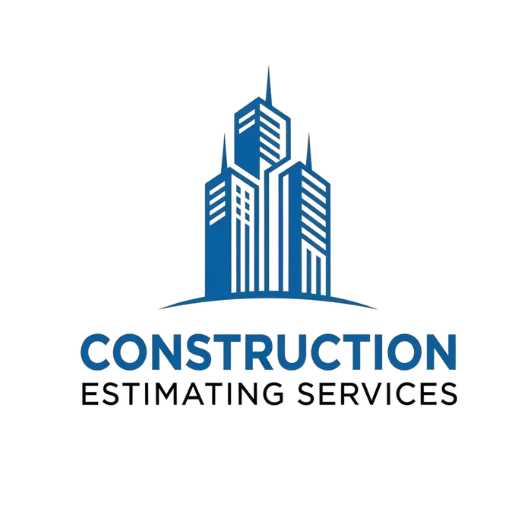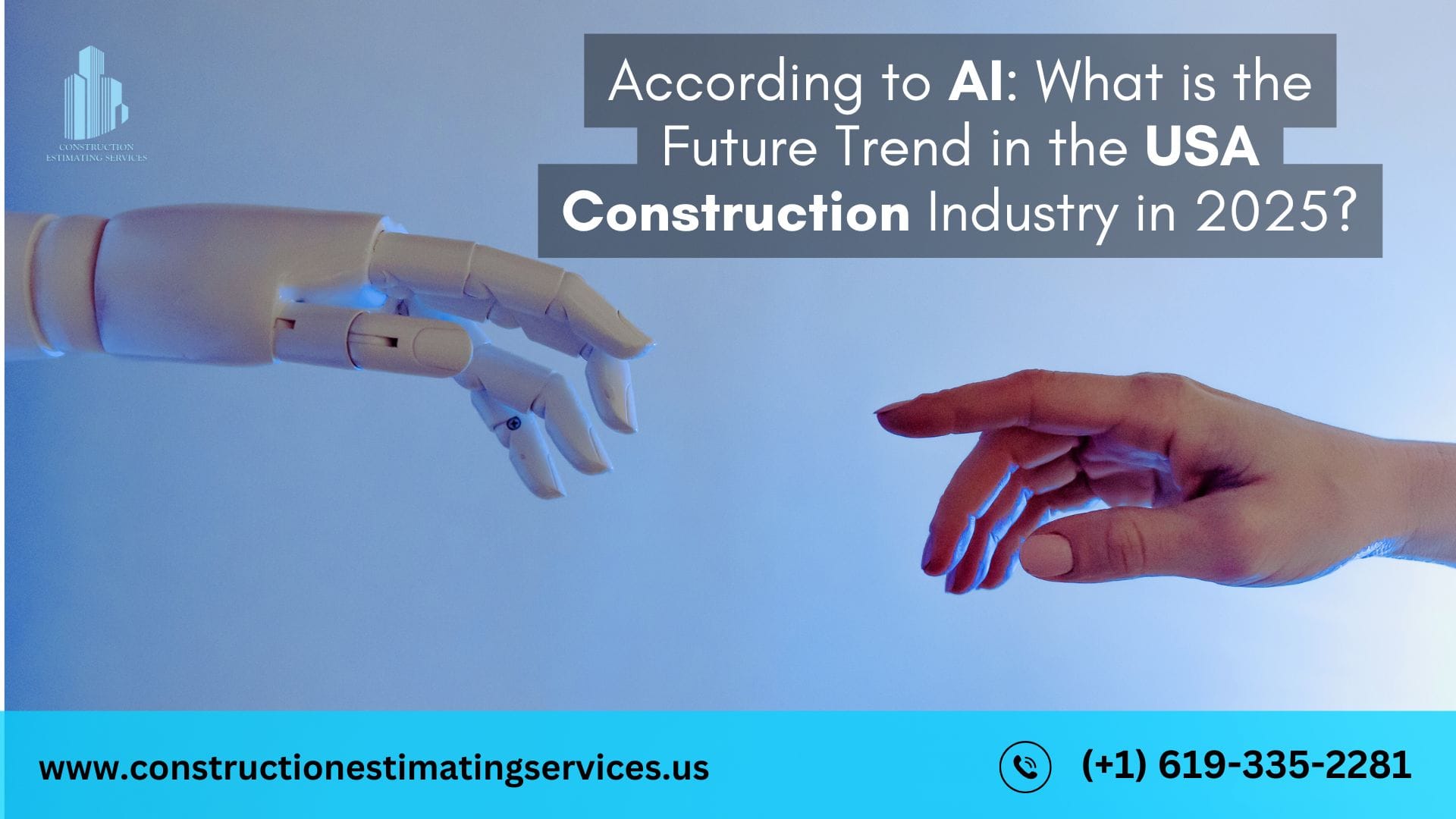According to AI: What is the Future Trend in the USA Construction Industry in 2025?
The construction industry in the USA is on the brink of transformative change. With advancements in AI, sustainability initiatives, and emerging technologies, the industry is gearing up for a future where efficiency, precision, and environmental responsibility will be paramount. As we look toward 2025, here’s a detailed look at the major trends forecasted by AI and how they’re set to shape the construction landscape. Accurate estimating remains at the core of successful project planning and budget control, and it’s essential to keep these trends in mind when planning future projects.
1. Sustainability and Green Building Initiatives
Sustainability has moved from being a luxury to a necessity in construction. AI predicts that by 2025, green building practices will become standard in major projects, with an emphasis on using eco-friendly materials, energy-efficient designs, and sustainable construction methods. In states like California and Georgia, environmental regulations are driving demand for eco-friendly buildings. AI-driven tools are helping companies optimize resource allocation, select sustainable materials, and reduce waste, ultimately leading to cost savings and reduced carbon footprints. By adopting green building initiatives, companies can meet regulatory standards while benefiting from lower operational costs.
2. Prefabrication and Modular Construction
As urban areas grow denser, the need for efficient construction methods like prefabrication and modular construction is rising. AI models predict that by 2025, states such as Utah and Arizona will see significant growth in modular projects. Prefabrication enables companies to manufacture building components off-site, reducing material waste and lowering costs. Furthermore, AI can optimize modular designs to enhance efficiency and predict potential issues in the construction process. Prefabrication and modular construction also reduce construction timelines, making projects more affordable and accessible.
3. Robotics and Automation in Construction
Robotics and automation are set to revolutionize the construction industry, with AI-powered robots expected to handle tasks like bricklaying, welding, and even site surveying. AI projects that in 2025, states like New York City and Texas will lead in adopting robotics on construction sites. By automating repetitive tasks, robots not only speed up the construction process but also improve safety by taking over high-risk jobs. AI-driven robots are also capable of performing tasks with exceptional precision, enhancing the quality of the final construction.
4. Building Information Modeling (BIM) and Digital Twins
Building Information Modeling (BIM) and digital twins are becoming integral to modern construction. BIM enables stakeholders to create detailed 3D models that simulate the construction process, while digital twins allow real-time monitoring of projects. AI anticipates that states such as Ohio and Michigan will be at the forefront of BIM adoption by 2025. BIM not only improves collaboration among project teams but also provides better cost control and risk management. Digital twins take this a step further by offering live updates on the project, allowing teams to address issues promptly and efficiently.
5. Predictive Analytics for Project Planning and Cost Estimation
In an industry where cost overruns are common, predictive analytics driven by AI is a game-changer. By analyzing historical data, AI can accurately forecast project costs, timelines, and resource requirements. In states like Maryland and Nevada, predictive analytics tools are helping project managers anticipate potential budget overruns and delays. These tools can also identify inefficiencies, allowing for better resource allocation. For construction estimating professionals, predictive analytics provides valuable insights that enhance project planning and ensure projects stay within budget.
6. Smart Cities and Infrastructure Development
As cities evolve, the concept of “smart cities” is gaining momentum. AI is at the core of smart city initiatives, enabling the development of interconnected urban environments with intelligent infrastructure systems. By 2025, AI predicts that states such as Pennsylvania and Oregon will be key players in smart city development. From monitoring traffic flow to optimizing energy use, AI enhances the efficiency of urban infrastructure. Smart city projects rely on accurate estimating and planning to ensure that resources are utilized effectively and that projects meet both environmental and budgetary standards.
7. Demand for Skilled Labor and Precision Estimating
As the construction industry becomes more sophisticated, the demand for skilled labor continues to grow. AI models predict that by 2025, accurate labor cost estimation will be essential in states like Massachusetts and Minnesota. Companies are investing in upskilling their workforce to keep pace with new technologies. Accurate labor cost estimation ensures that budgets are realistic, reducing the likelihood of overruns due to labor shortages or inadequate skill sets. Precision estimating is essential for companies to secure skilled labor without straining their budgets.
8. Safety Enhancements through AI
Safety has always been a top priority in construction, and AI is making construction sites safer than ever before. With AI-driven real-time monitoring systems, companies can track worker movements and identify potential safety hazards. By 2025, states like Indiana and Missouri are expected to prioritize AI-enhanced safety protocols. These systems can alert workers to dangerous conditions, reducing the risk of accidents. Additionally, AI can predict weather conditions and other external factors that may impact site safety, enabling construction teams to take proactive measures.
9. Construction Site Surveillance and Drone Technology
Drones have become an indispensable tool for construction surveillance, providing real-time updates on project progress and site conditions. AI-enhanced drones can monitor large areas, inspect high-risk locations, and capture precise data for analysis. By 2025, states like Alaska and Colorado will be at the forefront of drone adoption in construction. These drones also contribute to accurate estimating by providing detailed topographical data, helping project managers assess material requirements and plan efficiently.
10. Supply Chain Optimization with AI
Supply chain disruptions have been a recurring challenge in the construction industry. AI-powered supply chain management tools are helping companies predict demand, manage inventory, and minimize delays. By 2025, states like South Carolina and North Carolina will see improvements in construction supply chains thanks to AI. These tools enable companies to avoid material shortages and ensure timely delivery, reducing project delays and cost fluctuations.
The Growing Importance of AI in Construction Estimating by 2025
As these trends unfold, accurate estimating becomes even more crucial. AI-driven estimating tools allow companies to plan budgets, allocate resources, and set realistic timelines with greater precision. Whether for projects in Hawaii or Wyoming, AI provides invaluable insights that drive successful project completion.
Advantages of AI-Powered Construction Estimating:
- Optimized Resource Use: AI helps prevent material wastage by predicting exact resource requirements.
- Cost Control: Accurate forecasting keeps projects within budget and mitigates financial risks.
- Improved Efficiency: Precise timelines and budget estimates streamline project planning, making processes more efficient.
Conclusion
By 2025, the USA construction industry will be transformed by AI-driven advancements, including sustainable practices, modular construction, and predictive analytics. Accurate estimating remains the foundation of successful construction projects, enabling companies to manage costs, stay on schedule, and meet high standards. From Virginia to Florida, these AI-predicted trends highlight the importance of adopting new technologies for a competitive edge.












